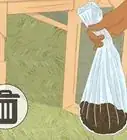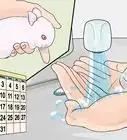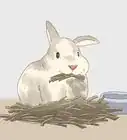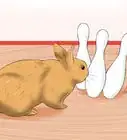This article was co-authored by Pippa Elliott, MRCVS. Dr. Elliott, BVMS, MRCVS is a veterinarian with over 30 years of experience in veterinary surgery and companion animal practice. She graduated from the University of Glasgow in 1987 with a degree in veterinary medicine and surgery. She has worked at the same animal clinic in her hometown for over 20 years.
wikiHow marks an article as reader-approved once it receives enough positive feedback. This article received 15 testimonials and 85% of readers who voted found it helpful, earning it our reader-approved status.
This article has been viewed 501,242 times.
It is an unfortunate truth that there is no easy way to tell the age of a rabbit. It is certainly not possible to date a rabbit's age down to a particular date or number of years. However, by looking at some specific clues, you should be able to determine if the rabbit is young (birth to adolescence), adult, or elderly. In fact, with a little further investigation, you can likely figure out if a rabbit is very young, a youth, or a young adult, but that is about as far as anyone can tell.
Steps
Figuring Out the General Age of a Rabbit
-
1Use general age categories to categorize the rabbit. This will give you a good way of starting your assessment. A young rabbit is up to 9 months of age.[1] An adult rabbit is approximately 9 months to 4 - 5 years of age. An elderly rabbit is 4 - 5 years upwards.
- Some rabbits live to be 10 - 12 years of age.
-
2Don't assume the age will be easily identified. The reason rabbit's are so hard to age is that they don't have any distinguishing marks or features that change as the rabbit ages. Unlike many other animals, rabbits in young adulthood and old age can look very, very similar.
- This is in contrast to horses, which can be aged fairly accurately by examining their teeth because they have a unique set of marks which grown out with the teeth as the animal ages. Even if there were helpful marks on rabbit teeth, those affecting the molars would be hard to see as they are right at the back of the mouth and it requires special instruments to see them.
Advertisement -
3Assess the rabbit's overall appearance and behavior. You want to make a list of your rabbit's attributes in order to gauge what age it might be. Things to look for include:
- Activity Levels: Does the rabbit regularly exhibit playful behavior or does it mainly sleep and eat? Does the rabbit move in fluid, graceful movements or does it seem stiff and sore?
- Overall Appearance: Is the rabbit's coat soft and luxurious or harsh and course?
- Physical Wear and Tear: Does the rabbit have sores of/on the hocks?
Assessing Whether You Have a Baby or an Adolescent Rabbit
-
1Figure out if the rabbit is still a baby. Is the rabbit still growing and still spending a lot of time with its mother? Baby rabbits are born blind, and deaf. They are very small and nursed by their mother once or twice every 24 hours, usually at night.[2]
- By 6 - 8 days the eyes and ears open and they have thin fluff. By 2 weeks of age they will have a full coat of fur.
- By two weeks of age rabbits start showing an interest in nibbling grass and herbage. By 3 weeks of age they are regularly leaving the nest and readily reacting to sounds.
- Young rabbits begin weaning from the mother at about 4 - 5 weeks of age, by which time they look like miniature adults. Weaning is usually complete (the youngster no longer feeds from the mother) by 8 weeks of age.
-
2Determine if your rabbit is full grown. To figure this out you need to know how big your breed of rabbit should be when full grown. If you are uncertain if you have a small breed of rabbit that is an adult, or a young rabbit that is still growing, then take weekly photographs of the rabbit and compare the pictures.
- If necessary include the same object each week as a reference, or a rule.
- Depending on the breed, rabbits continue to grow until they are 6 - 9 months old (the top of the range for larger breeds).
-
3Assess the rabbit's reproductive behavior. Adolescence in the rabbit occurs when the rabbit start to produce reproductive hormones. This most commonly happens from 4 months of age onward, with 4 - 6 months being a typical age at which rabbits become interested in the opposite sex.[3]
- Adolescent rabbits tend to be very nosy and inquisitive, and love to check out their environment. If they encounter another rabbit of the same sex, their rising hormones may cause them to squabble and fight. A young rabbit is likely to be reactive, and indulge in a lot of back paw thumping at perceived dangers.[4] However, if they meet the opposite sex they may try to mate.
Distinguishing Between an Adult and an Elderly Rabbit
-
1Look for behavior that indicates you have an adult or elderly rabbit. Adult rabbits can also show hostile mating behavior, but they are often less inquisitive of their environment. Adult rabbits tend to be active when awake and feeding, and divide their time between these activities and sleeping. When they are awake they give the impression of being alert and interactive.
- Older rabbits tend to sleep more and eat less, and may be prone to losing weight and become skinny. When they are awake they may react less to things going on around them, and seem less interested in their environment.[5]
-
2Assess the rabbit's overall appearance. A young rabbit is still growing, so you should be able to spot a change in size. An adult rabbit is at the peek of their physical powers and is likely to have a glossy, shiny coat, have bright eyes, be a good weight (possibly even plump) and move in an easy fluent manner.
- In contrast an older rabbit may have a dull coat, because they don't groom themselves as much. They may have impaired vision or hearing, and not interact with their environment as much as an adult rabbit. When they move they are liable to look stiff, and move awkwardly, perhaps shuffling along rather than hopping.
-
3Look for sore hocks.[6] There is no scientific link between sore hocks and age, but some rabbit keepers have noticed that older animals are more likely to have sore hocks. This condition is caused by the animal's body weight pressing down on the thin skin of their hocks, causing the fur to rub away and thick skin to develop.
- There are many variable factors in the development of sore hocks, which include the animal's weight (the heavier the rabbit, the more likely sores are to form), the depth of their bedding (lack of bedding is a risk factor), and how clean or dirty the bedding is (Urine soaked bedding scalds the fur and causes it to fall out).
- It is unlikely a young rabbit has all of these factors in place, so sore hocks are rare in a young rabbit. However, the older the rabbit gets the more it is likely these factors occur, resulting in hock calluses.
-
4Look at the rabbit's teeth. Rabbits can suffer from overgrown teeth at any age, as this can be caused by their diet and the teeth not getting worn down, rather than age. However, older rabbits tend to eat less and so their teeth are more likely to become overgrown.
- The symptoms of overgrown teeth can include the rabbit grinding its teeth or having a wet chin where it drooled.
Expert Q&A
-
QuestionWhat age do rabbits live to?
 Pippa Elliott, MRCVSDr. Elliott, BVMS, MRCVS is a veterinarian with over 30 years of experience in veterinary surgery and companion animal practice. She graduated from the University of Glasgow in 1987 with a degree in veterinary medicine and surgery. She has worked at the same animal clinic in her hometown for over 20 years.
Pippa Elliott, MRCVSDr. Elliott, BVMS, MRCVS is a veterinarian with over 30 years of experience in veterinary surgery and companion animal practice. She graduated from the University of Glasgow in 1987 with a degree in veterinary medicine and surgery. She has worked at the same animal clinic in her hometown for over 20 years.
Veterinarian The life expectancy for pet rabbits kept under ideal conditions is 8 - 12 years. This is in contrast to wild rabbits that have to escape predators, disease, and hardship, where the average is just a few years.
The life expectancy for pet rabbits kept under ideal conditions is 8 - 12 years. This is in contrast to wild rabbits that have to escape predators, disease, and hardship, where the average is just a few years. -
QuestionHow can you tell if a rabbit is a boy or a girl?
 Pippa Elliott, MRCVSDr. Elliott, BVMS, MRCVS is a veterinarian with over 30 years of experience in veterinary surgery and companion animal practice. She graduated from the University of Glasgow in 1987 with a degree in veterinary medicine and surgery. She has worked at the same animal clinic in her hometown for over 20 years.
Pippa Elliott, MRCVSDr. Elliott, BVMS, MRCVS is a veterinarian with over 30 years of experience in veterinary surgery and companion animal practice. She graduated from the University of Glasgow in 1987 with a degree in veterinary medicine and surgery. She has worked at the same animal clinic in her hometown for over 20 years.
Veterinarian To identify a rabbit's gender, look between their back legs. A male rabbit has two long testicles on either side of the belly, just below the surface. A female rabbit lacks testicles and has a slit-like vulva. However, be aware the differences can be tricky to spot, so if in doubt, get a vet to check.
To identify a rabbit's gender, look between their back legs. A male rabbit has two long testicles on either side of the belly, just below the surface. A female rabbit lacks testicles and has a slit-like vulva. However, be aware the differences can be tricky to spot, so if in doubt, get a vet to check. -
QuestionHow long does a bunny have to stay with the mother?
 Pippa Elliott, MRCVSDr. Elliott, BVMS, MRCVS is a veterinarian with over 30 years of experience in veterinary surgery and companion animal practice. She graduated from the University of Glasgow in 1987 with a degree in veterinary medicine and surgery. She has worked at the same animal clinic in her hometown for over 20 years.
Pippa Elliott, MRCVSDr. Elliott, BVMS, MRCVS is a veterinarian with over 30 years of experience in veterinary surgery and companion animal practice. She graduated from the University of Glasgow in 1987 with a degree in veterinary medicine and surgery. She has worked at the same animal clinic in her hometown for over 20 years.
Veterinarian Six weeks is considered the ideal length of time for a baby bunny to stay with their mother. In some circumstances, a youngster can be early weaned and leave at 4 weeks, but 6 is preferred.
Six weeks is considered the ideal length of time for a baby bunny to stay with their mother. In some circumstances, a youngster can be early weaned and leave at 4 weeks, but 6 is preferred.
References
- ↑ Rodent and Rabbit Medicine. Paul Flecknell. Publisher: Butterworth-heinemann
- ↑ http://www.2ndchance.info/bunnies.htm
- ↑ Rodent and Rabbit Medicine. Paul Flecknell. Publisher: Butterworth-heinemann
- ↑ http://www.bunnyhugga.com/a-to-z/rabbit-behaviour/rabbit-lifestages.html
- ↑ http://www.bunnyhugga.com/a-to-z/rabbit-behaviour/rabbit-lifestages.html
- ↑ http://rabbit.org/how-to-determine-a-rabbits-age/
About This Article
To tell the age of a rabbit, assess the rabbit's overall appearance and behavior. Baby rabbits are easy to discern, since they're very tiny and born blind and deaf! Adolescents usually have unmarred coats and spend a lot of time playing and exploring. Adult rabbits, between 9 months and 5 years old, may show hostile mating behavior and seem less inquisitive about their environment.You can often distinguish an elderly rabbit, age 5 and up, by its conspicuously long front teeth. For more tips on figuring out the general age of a rabbit, read on!
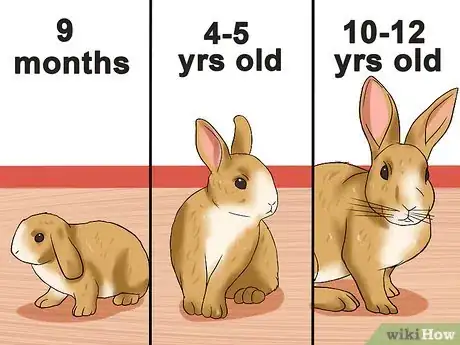
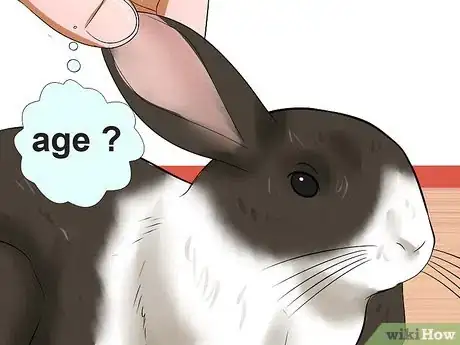
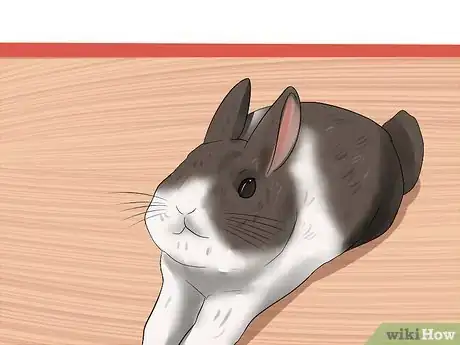
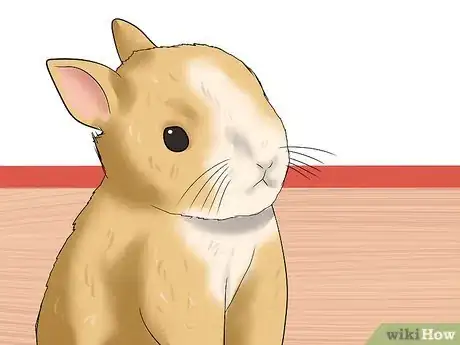
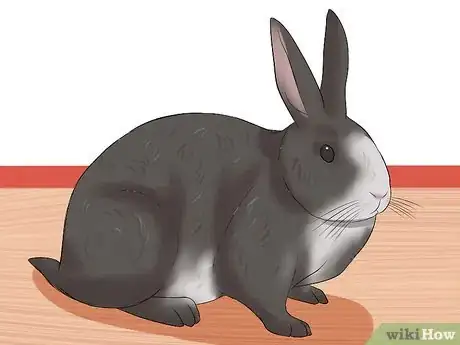


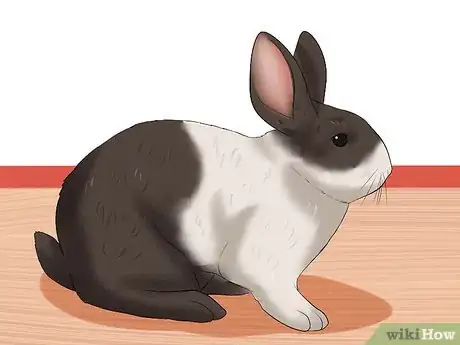
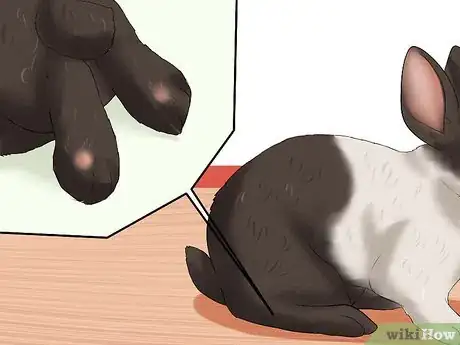
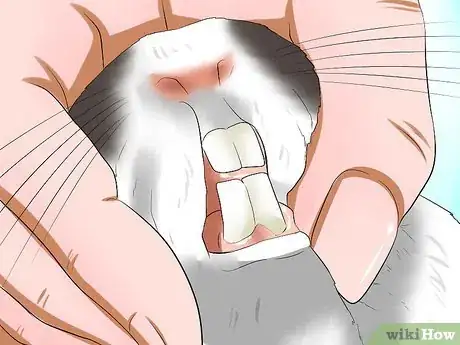
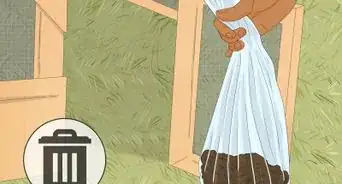
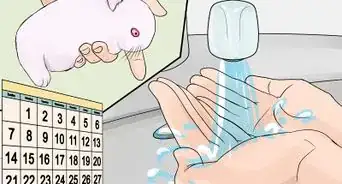
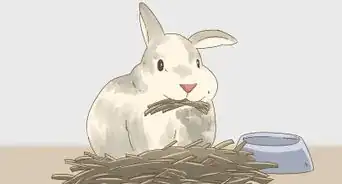
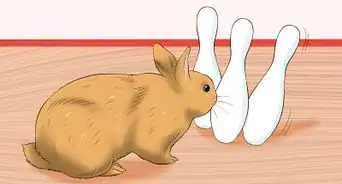
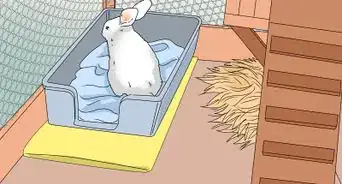
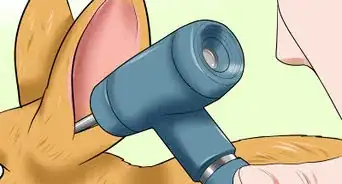
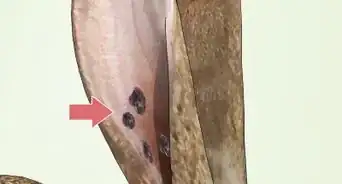
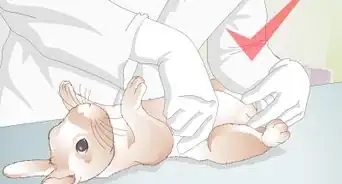
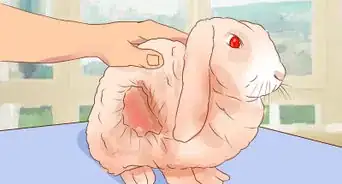
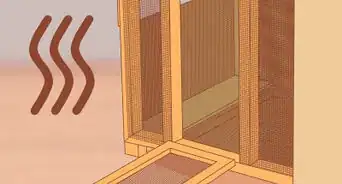

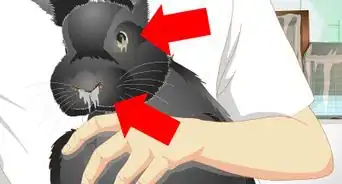
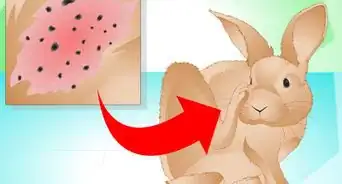
-in-Rabbits-Step-12.webp)










